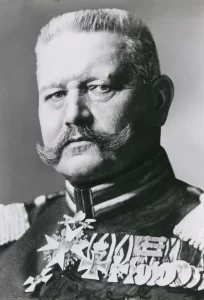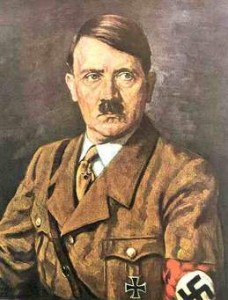 I think most of us have heard the name Hindenburg in some version or another. Whether it’s the airship disaster of 1937; the man himself, Paul von Hindenburg; or the Hindenburg Line of World War I, the name is known. Paul von Hindenburg was born into an aristocratic family on October 2, 1847, in Posen, Prussia, which is present-day Pozna?, Poland. His father was a Prussian military officer-turned-government official, who was granted a title of nobility in 1869; and his mother was the daughter of a doctor.
I think most of us have heard the name Hindenburg in some version or another. Whether it’s the airship disaster of 1937; the man himself, Paul von Hindenburg; or the Hindenburg Line of World War I, the name is known. Paul von Hindenburg was born into an aristocratic family on October 2, 1847, in Posen, Prussia, which is present-day Pozna?, Poland. His father was a Prussian military officer-turned-government official, who was granted a title of nobility in 1869; and his mother was the daughter of a doctor.
Hindenburg joined the Prussian army when he was 19, amid the Austro-Prussian War in 1866, which was also referred to as the Seven Weeks’ War…a significant event leading up to the unification of Germany. Hindenburg fulfilled the role of a staff officer in the Franco-Prussian War from 1870 to 1871 and ultimately rose to the rank of lieutenant general.
After a long military career, Hindenburg retired in 1911, at the age of 64. Then, with the onset of World War I in 1914, he was recalled to active service. As commander of the Eighth Army, he was elevated to the rank of field marshal and achieved a string of victories over the Russians on the Eastern Front, cementing his status as a national hero. One battle that stands out was the Battle of Tannenberg in Poland. Under his command, alongside his chief of staff General Erich Ludendorff, it became one of Germany’s most decisive triumphs of the war.
Anna von der Golz wrote a book called Hindenburg, in which she is quotes as saying, “Soon after the outbreak of war Hindenburg became Germany’s major symbol of victory against the enemy and of unity at home–a function traditionally performed by the Emperor in wartime, or perhaps on occasion by the Chief of the General Staff, but certainly not by the commander of a single German army.”
The phrase “Hindenburg will sort it out,” swiftly turned into a catchphrase, and depictions of the field marshal proliferated, she said. Hindenburg was named chief of the German General Staff by Kaiser Wilhelm entrusting him with the army’s command. Still, the Allies still managed to inflict a decisive defeat.
Following Germany’s defeat in World War I, Hindenburg retired from the military for the second time and entered politics. In 1925, at the age of 77, the “Victor of Tannenberg” was elected as the president of the democratic Weimar Republic (1919-1933), becoming Germany’s second president. He was re-elected in 1932.
In an effort to stabilize the region after the war and the harsh conditions of the Armistice of Compiègne, Hindenburg resorted to issuing presidential emergency decrees, not a real good move on his part. Nevertheless, it was permitted by the nation’s constitution in times of disturbance and economic distress. These decrees enabled him to bypass the German parliament’s consent, suppress his political adversaries, curtail free speech and other civil liberties, and permit military leaders to dictate foreign policy.

Hindenburg was initially a critic of Hitler and the Nazi Party, so at first, he declined to bestow upon Hitler the chancellorship he sought. However, under pressure from his conservative advisors and due to the rising influence of the Nazi Party, he eventually named Hitler as chancellor, reassured by his advisors that they could contain the Nazi program. That was likely his biggest mistake. Hitler swiftly utilized Hindenburg’s decree powers to enact several mandates, including the 1933 Reichstag Fire Decree, the Enabling Act, and the Law for the Protection of the People and the State.
As Hindenburg’s health declined, his appointment effectively granted Hitler dictatorial powers. Upon Hindenburg’s death at age 86 on August 2, 1934, Hitler declared himself the Führer of Germany. Hindenburg was buried alongside his wife, Gertrud von Sperling, who passed away in 1921, at the Tannenberg war memorial in Prussia. Their remains were later transferred to Saint Elizabeth Church in Marburg, Germany, in 1946.


Leave a Reply